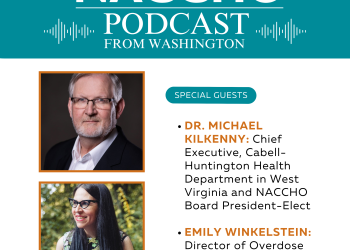December 6-12 is National Influenza Vaccination Week (NIVW) in the United States. NIVW is observed to remind people that there is still time and it is still important to get an influenza (flu) vaccine. Seasonal flu affects a large number of people annually in the United States and worldwide. In the 2018-2019 flu season in the US, there were an estimated 35.5 million cases, 490,000 hospitalizations, and 34,200 deaths. The flu vaccine is the most effective intervention we have to reduce the number and the severity of cases as well as deaths. It is especially important for those at high-risk, such as older adults or those with underlying health conditions, to get the flu vaccine in order to prevent severe disease and death.
This year, as we are also battling the COVID-19 pandemic, it is more important than ever to get the flu vaccine. This is essential to avoid dual epidemics and reduce the strain on the already overwhelmed healthcare system. Preliminary early data for the current flu season indicate that there has been an increase in the number of individuals that have received their flu vaccine. Data shows that 23.5 million people received their flu shot between August 7 and October 2 compared to 12.6 million during the same time period in 2019. However, key populations are being missed and remain hesitant to receive their annual flu vaccine. During the 2019-2020 flu season, only 38% of Hispanic or Latino persons, 41% of Black persons, and 42% of American Indian or Alaska Native persons received a flu vaccination.
Black, Indigenous, and People of Color (BIPOC) communities may be more vaccine hesitant due to abuses and racism in the medical and scientific communities. In a study from Pew in early 2020, only 35% of Black adults said they “have a great deal of confidence in medical scientists to act in the best interests of the public”. This lack of confidence and trust often translates to vaccine hesitancy and low flu vaccination rates in these populations. In addition, BIPOC persons may be at higher risk for developing severe complications from the flu. According to flu hospitalization rates, BIPOC persons are more likely to be hospitalized related to the flu than white persons. Black persons were most likely to be hospitalized (68 per 100,000), followed by American Indian/Alaska Native (48 per 100,000), and then Hispanic or Latino persons (44 per 100,000). White persons have a hospitalization rate of 38 per 100,000. Given this data, it is vitally important to work in and with these communities to understand barriers to vaccination and work to mitigate them. These barriers may include lack of trust in the medical system, lack of access to vaccines, barriers due to cost, or a variety of other concerns. Public Health must work with these communities to build trust and decrease barriers.
One program working in and with BIPOC communities is CDC’s Racial and Ethnic Approaches to Community Health (REACH) program. REACH has been around for over 20 years and funds organizations to plan and implement culturally appropriate health programs for underserved racial and ethnic populations. This year they have funded sites to focus on increasing flu vaccine uptake in hesitant populations. REACH has many resources available on their website that can be utilized in promoting equity across all sectors of health, including vaccination.
As we are working to increase flu vaccination rates, we cannot forget to work with BIPOC communities to understand the unique barriers and concerns they have. In working with them we can develop messaging and programming that specifically addresses their hesitancies. Doing so will not only help increase rates of flu vaccination and reduce the incidence and burden of disease but will also help build trust for the COVID-19 vaccine.
-----
Join NACCHO in observing the importance of NIVW. Access the below resources for additional information:
- NACCHO’s weekly podcast featuring LJ Tan, Chief Strategy Offices for the Immunization Action Coalition and co-chair for the National Adult Influenza and Immunization Summit, talking about the importance of NIVW.
- A Story from the Field from Genesee County Health Department in Burton, Michigan detailing their success with drive-thru flu vaccination clinics.
- NACCHO’s School-Located Influenza Vaccination Toolkit, to help guide LHDs in organizing and implementing these types of clinics.



